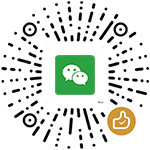
Generative AI Application Integration Patterns: Integrate large language models into your applications
Author:by Juan Pablo Bustos (Author), Luis Lopez Soria (Author)
Publisher finelybook 出版社:Packt Publishing
Edition 版本:N/A
Publication Date 出版日期:2024-09-5
Language 语言:English
Print length 页数:218pages
ISBN-10:1835887600
ISBN-13:9781835887608
Book Description
Review
“Generative AI Application Integration Patterns serves as a timely guide for navigating the nuanced landscape of integrating GenAI into existing business applications. This book is a well-written, engaging, and very relevant set of blueprints that technology and business leaders, as well as developers, should be aware of as they seek to integrate applications with the promise presented in GenAI. I encourage you to dive deep into the examples, reflect on the concepts presented in this book, and embark on the exciting journey of discovery and innovation in harnessing the potential of GenAI. The future of business is being shaped by AI, and this book is an essential companion on that path.”
Dr. Ali Arsanjani, Director of Applied AI Engineering, Google
“This book presents a timely and comprehensive resource for practitioners looking to effectively integrate generative AI into their applications. The book arrives at a pivotal moment in the evolution of Generative AI, not only demystifying the integration of LLMs into applications, but also emphasizing the ethical and responsible development of these technologies.
Bustos and Soria have expertly distilled complex concepts into actionable frameworks that can empower developers to navigate the challenges of GenAI integration effectively. Having pioneered scientific R&D leading global practices in Human Centered Meaning Aware Artificial Intelligence, AI Risk Management and Controls, and AI Business Performance Outcomes, we find their work particularly relevant in the context of advancing our understanding of AI systems beyond mere data-driven predictions to anticipating surprises in a rapidly evolving digital landscape for better business performance outcomes. In summary, Generative AI Application Integration Patterns serves as an essential guide for practitioners, offering a robust framework for harnessing the potential of generative AI while addressing critical ethical considerations.”
Dr. Yogesh Malhotra, Chairman at Global Risk Management Network, LLC and Founder of AWS Quantum Valley Network
About the Author
Juan Pablo Bustos is a seasoned technologist with over 20 years of experience in driving innovation and delivering impactful solutions across diverse industries. Juan brings expertise in solution architecture, product incubation, and integration, coupled with expertise in cloud computing, AI, and machine learning.
Luis Lopez Soria is an experienced software architect specialized in AI/ML. He has gained practical experience from top firms across heavily regulated industries (healthcare, and finance) as well as big tech. He brings a blended lens from his experience managing global partnerships, AI product development, and customer facing roles.
下载地址
相关推荐
- Securing Cloud Containers: Building and Running Secure Cloud-Native Applications
- Application of FPGA to Real-Time Machine Learning Hardware Reservoir Computers and Software Image Processing
- Embedded Microprocessor System Design using FPGAs
- Digital System Design with FPGA: Implementation Using Verilog and VHDL
 finelybook
finelybook
